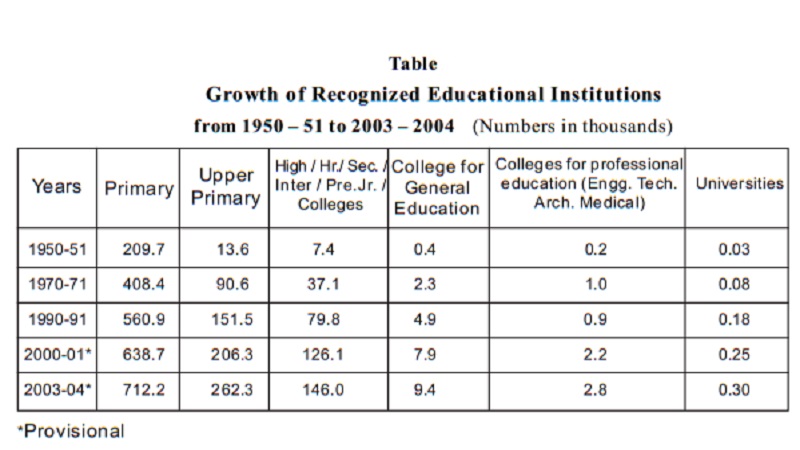Chapter: 11th 12th std standard Indian Economy Economic status Higher secondary school College
Educational Development in India since 1951

Educational
Development in India since 1951
Mass
education was never a priority during the British, period. The colonial rule
transformed an intermediate literate society into a predominantly illiterate
society.
Ever
since Independence, an educational explosion has taken place in India. As
J.B.G. Tilak put it 'Today, the number of pupils in India outnumber the total
population of England, France, Canada, and Norway taken together. Every sixth
student in the world enrolled at the primary level, every seventh in the
secondary level and every eighth in the tertiary level is an Indian'.
Before
we launched our Five Year Plans, only about 1.2 percent of GNP was invested in
education. But now the public investment increased to about 3.5 percent of GNP.
Though
the educational expansion in India is remarkable (see Table 10.1 and 10.2 given
at the end of the chapter), quantity, quality and equity have become an elusive
triangle of the Indian education system.
The
greatest failure of the Indian educational system relates to the goal of
universalisation of elementary education. At the secondary level,
vocationalization has not yielded the desired results. Courses introduced in
the vocational stream at the higher secondary level are of nominal nature and
they do not really help the students get jobs. And it is only the upper and the
middle classes who get the benefits of the education system. Even after thirty
years of independence, in 1978 it was found that '70 percent of the seats is
secondary schools and 80 per cent of the seats in higher education are taken up
by the top 30 percent of income groups'. There is no reason to believe that the
position has changed for the better. There is mismatch between demand for and
supply of manpower and growth in unemployment and fall in the quality of
education.
The
Indian education system is marked by inequalities. There are differences in the
rates of literacy between rural and urban population, between men and women,
between backward and non-backward castes, between states and between districts
within a state.
One
of the basic problems of educational sector is under - investment. The data
relating to allocation of financial resources during the last fifty years
confirms this point. Only during the First Five Year Plan, priority was given
to mass education. Elementary education and adult education programmes received
nearly three fifths of the resources allocated for education. There was decline
in importance attached to them in subsequent plans.
We
should have achieved the goal of universalization of primary education by 1960,
that is, within ten years from the commencement of the Constitution. But, we
are nowhere near the goal even today.
One
of the secrets of the rapid economic development of Japan is the emphasis it
laid on primary and vocational education and the allocation of huge financial
resources to these sectors.
Child
labour is one of the important reasons for not achieving the goal of
universlization of primary education. And majority of the children drop out
from schools because of this.
Related Topics